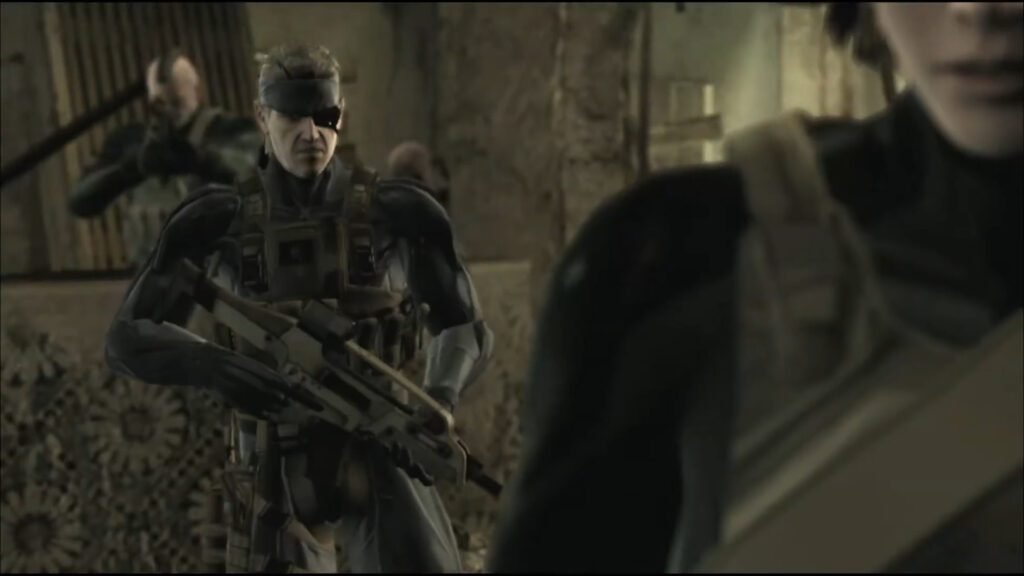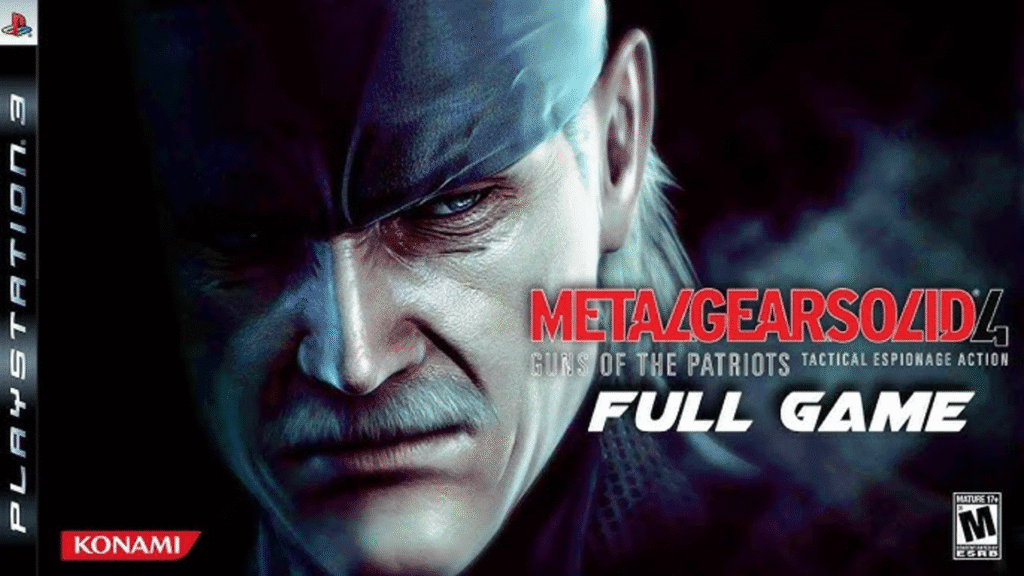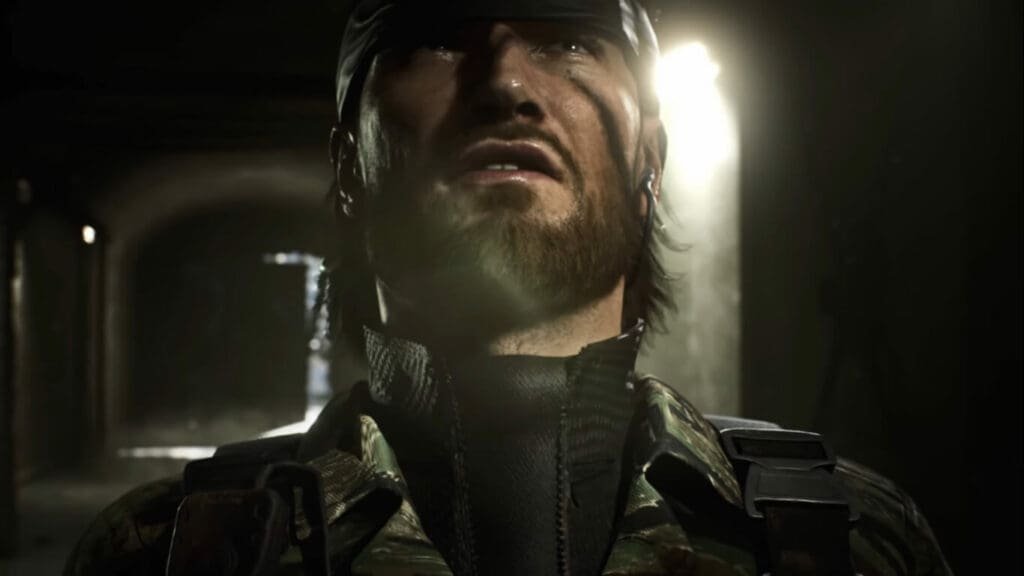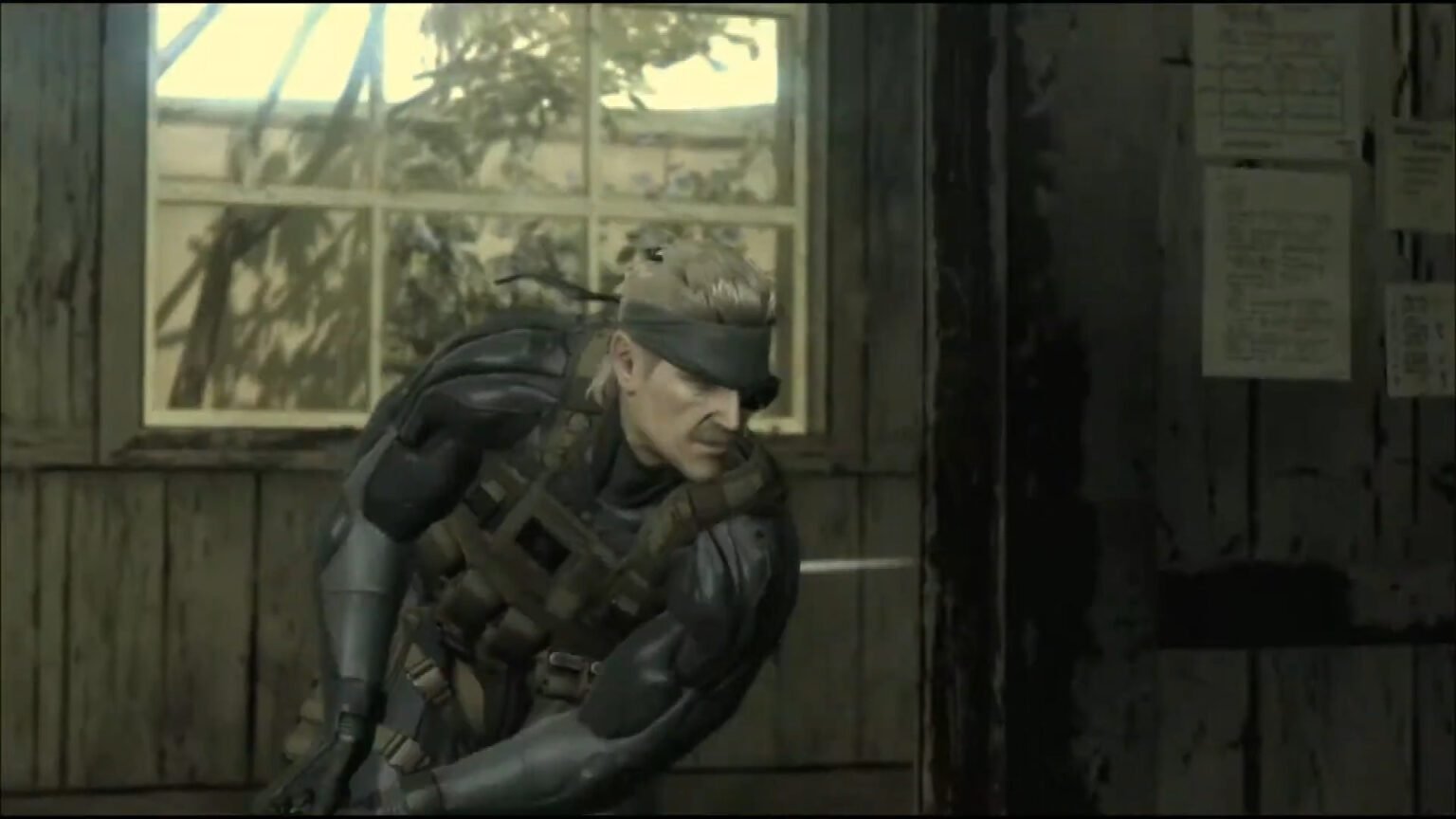Metal Gear Solid 4 has been sitting in a time capsule for over a decade, locked away on the PlayStation 3. For a game that was once the crown jewel of its generation, it’s strange almost tragic that you can’t play it anywhere else today without digging up old hardware.
While Konami is moving forward with Metal Gear Solid Delta: Snake Eater, I can’t help but wonder when Guns of the Patriots will get the same treatment. It’s starting to feel like the delayed Ape Escape mode.
Metal Gear Solid 4 – A Story That Hit Too Close to Home

Each Metal Gear Solid game has its own defining theme. For MGS4, it was the digitization of war ( private military companies, drone soldiers, nanomachines controlling the battlefield). Looking at where our world is headed with AI, biotech, and automated defense systems, the dystopia Kojima painted doesn’t feel far-fetched anymore. That makes the game’s narrative even more relevant now than in 2008.
It wasn’t just the ideas that stood out, the execution was classic Kojima. MGS4 tied up loose ends from every prior entry while still telling the personal story of Old Snake, a soldier battling both a global conspiracy and his own failing body.
It wasn’t perfect the exposition dumps could be heavy but somehow it all worked. Yes, that final cutscene, clocking in at over 70 minutes, still holds its place as one of gaming’s most unforgettable finales.
The PS3 Prison problem

Metal Gear Solid 4: Guns of the Patriots isn’t just any entry in the series it’s the one that tied together years of tangled story threads. It’s stuck on a single console, a PS3 relic that’s becoming harder to find and even harder to maintain.
Anyone curious about it today either hunts down a used system or misses out entirely. While the game still looks fine for its era, it can’t stand shoulder to shoulder with modern AAA releases in terms of visuals and fluidity. That means new players might never feel its full impact.
Gameplay that Balanced Focus and Freedom

Compared to The Phantom Pain, MGS4 was more streamlined. That wasn’t a weakness, it was intentional. Levels were carefully designed to guide you toward certain tactics while still allowing room for experimentation. The OctoCamo suit, which let Snake blend seamlessly with his surroundings, was a standout feature that turned stealth into an art form.
Then there were the details that made the game feel alive, the psyche meter tracking Snake’s mental state, the large-scale battlefields that mixed stealth with open conflict, and boss fights that could rival any in the series. From Crying Wolf to the bare-knuckle brawl with Liquid Ocelot, these moments were cinematic, challenging, and deeply memorable.
Why a Remake could be Special

Rebuilding MGS4 for modern platforms wouldn’t just be nostalgia bait it would be a chance to refine what was already great. The narrative could be tightened without losing its ambition. New hardware could bring Kojima’s vision to life in ways that weren’t possible in 2008: detailed character models, ray-traced lighting, richer environments, and smoother controls. Quality-of-life updates could modernize the gameplay while keeping its personality intact.
Of course, this is where it gets tricky. Without Kojima at Konami, any change risks upsetting long-time fans. And releasing the game untouched might not justify a full price re-release. On top of that, the PS3’s Cell processor architecture means porting MGS4 isn’t as simple as dropping it into a new engine (it would need a complete rebuild from the ground up).
The Clock is Ticking

With Metal Gear Solid Delta on the horizon, and Konami confirming it will include Legacy Style Controls for long-time fans, there’s hope that its success could convince the studio to greenlight a proper remake of Guns of the Patriots. It could even find a place in a future Master Collection volume.
Unfortunately, every year that passes makes it harder for Metal Gear Solid 4 to return as the groundbreaking title it once was. Let’s just hope to see a sequel in the future.





